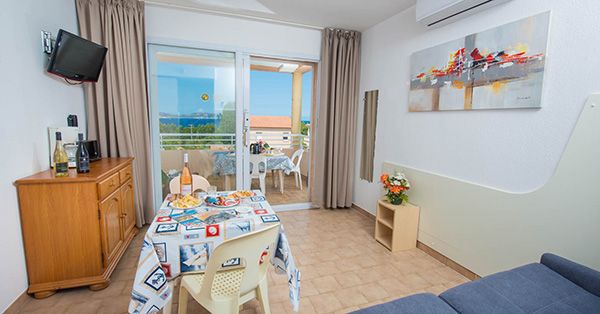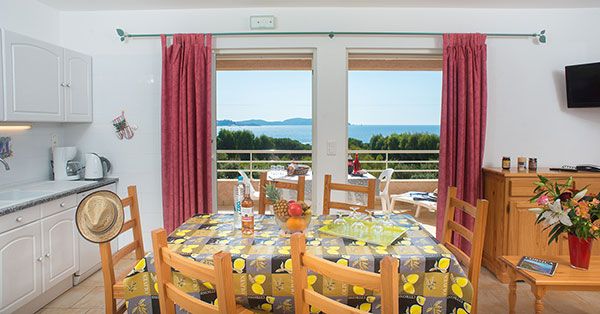What to visit in Aregno
Situated in the Balagne region, the old village of Aregno is a stop-off in its own right during a discovery holiday in Haute-Corse. Comprising the village of the same name, Aregno also has two hamlets, Torre and Praoli. What to do in Aregno What to see in Aregno? Follow the guide.
A brief history of Aregno
Before discovering Aregno, it's worth remembering that this ancient farming town was once at the heart of Corsica's garden. Presenting itself as a typical Balagne village, Aregno is the former administrative centre of a canton that included Algaiola, Lavatoghju, Corbara, Pigna and I Cateri. But even further back in history, around the 16th century, Aregno was a "piève" (a small village) that extended over a vast territory that included the following 12 communes:
- Lumio
- L’Île-Rousse
- Algajola
- Monticello
- Lavatoggio
- Santa-Reparata-di-Balagna
- Cateri
- Corbara
- Avapessa
- Pigna
- Aregno
- Sant’Antonino
What to see and do in Aregno?
Today, Aregno is a tourist destination in its own right and a must-see if you're staying in Haute-Corse. The town can be visited in just a few hours, and is home to a number of sites and monuments worth discovering.
The beach at Aregno
Stretching over 1.4 km of sand, this beach is the largest in the Algajola seaside resort. It is also close to the Algajola citadel. The beach is relatively busy, but for a quieter spot, head for the dunes on the northern side.
The Church of the Holy Trinity and Saint John the Baptist
Aregno's religious monuments are also a must-see if you're wondering what to see in Aregno. The church of the Holy Trinity and Saint John the Baptist is located near the village, in what is now the municipal cemetery. This church is thought to have been built in the first half of the 12th century.
It is decorated with monumental paintings from the 15th century. However, its bell tower was destroyed in the 19th century. In any case, the different parts of the Church of the Holy Trinity and Saint John the Baptist make it a beautiful and authentic place:
- Roman tile roof
- Constructed in medium-sized, set and levelled units
- Elevations with projecting semi-circular arches
- Modillions with sculpted decoration (geometric figures, zoomorphic figures in plat-relief and bas-relief, phytomorphic figures)
- Single nave with exposed wooden framework
- Semicircular apse in the shape of a cul-de-sac
The almond fair
If you want to know what to do in Aregno, don't just look at the buildings to visit. There are also events not to be missed.
At the beginning of August, the Foire de l'Amandier (Almond Fair) is a not-to-be-missed annual event in Aregno. Since 1997, this fair has brought together tourists and locals to promote the almond industry and its by-products.
Of course, the old local food traditions also take pride of place. In recent years, the Foire de l'Amandier has also been promoting the agricultural sector in general, as well as the craft industry in the Balagne region.
Walking around Aregno
As well as discovering Aregno, you can also explore the surrounding villages:
Corte
The former capital of Corsica, Corte is home to some not-to-be-missed attractions, including the citadel in the upper town, the Restonica valley, the Vecchio gorges and the Niolu, a land of shepherds made up of 5 villages and several hamlets.
Corbara
The former capital of Corsica, Corte is home to some not-to-be-missed attractions, including the citadel in the upper town, the Restonica valley, the Vecchio gorges and the Niolu, a land of shepherds made up of 5 villages and several hamlets.
- Discover its small hamlets.
- Stroll through the heart of the town to the belvedere at the Collegiate Church of A Nunziata, a soft pastel pink.
- Climb the Corbara hill towards the Chapel of Notre-Dame des Sept Douleurs.
- Wander through the narrow streets and footpaths of the village, discovering the old houses.
- Enjoy the magnificent panorama outside the chapel.
- Visit the Museum of Religious Art (or Treasure Museum) and the Museum of Art and History.
- Etc.
Pigna
Covering an area of 2.21 km² and with a population of around one hundred, the village of Pigna is built on a rocky spur at an altitude of 224 metres. The village is entirely pedestrianised and sits on a mountain that rises to 562m. The houses are built in typical Balinese style. Enjoy a gentle, pleasant atmosphere in this authentic craft village surrounded by olive trees.
There are a number of places worth a visit to Pigna: the craftsmen's stalls, the cemetery, the small museum of music boxes, the tombs sculpted into real works of art, etc.




